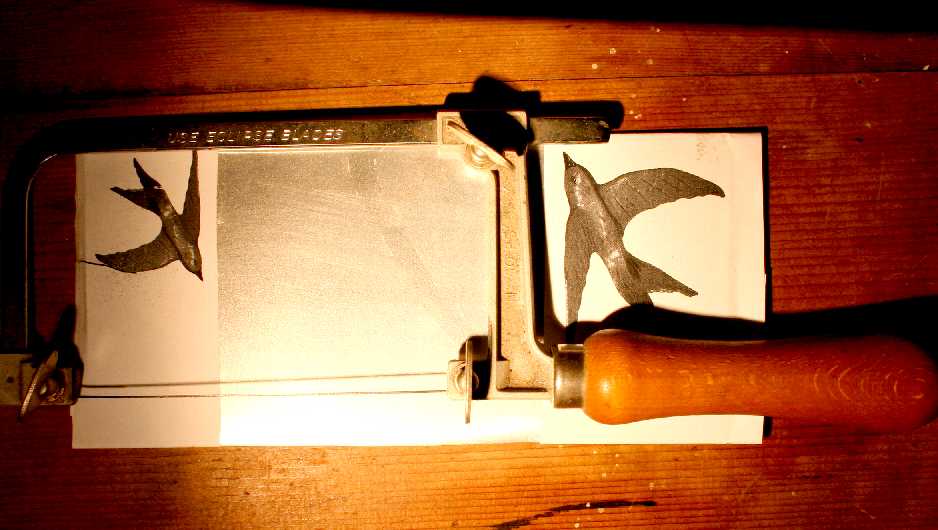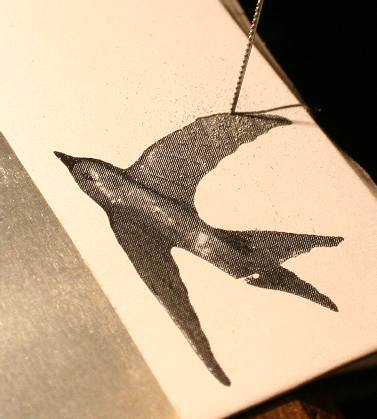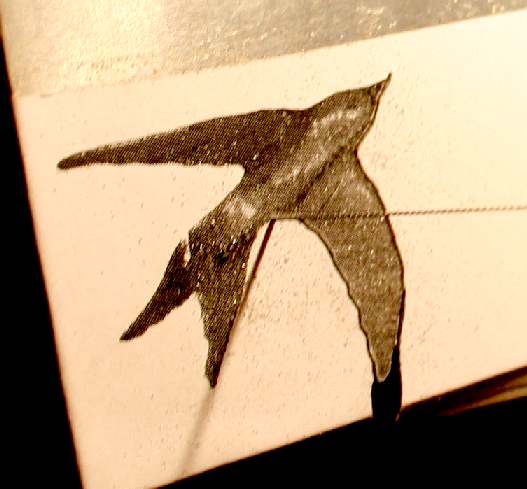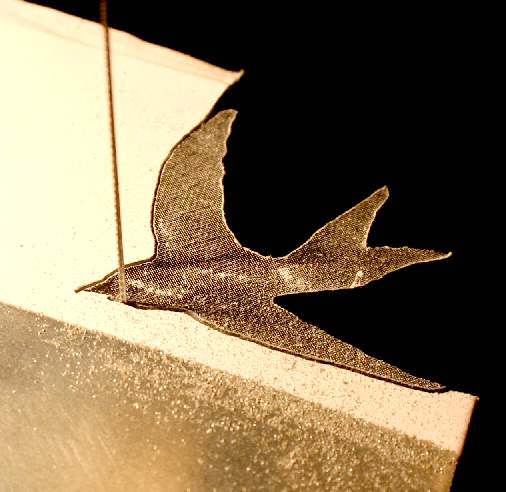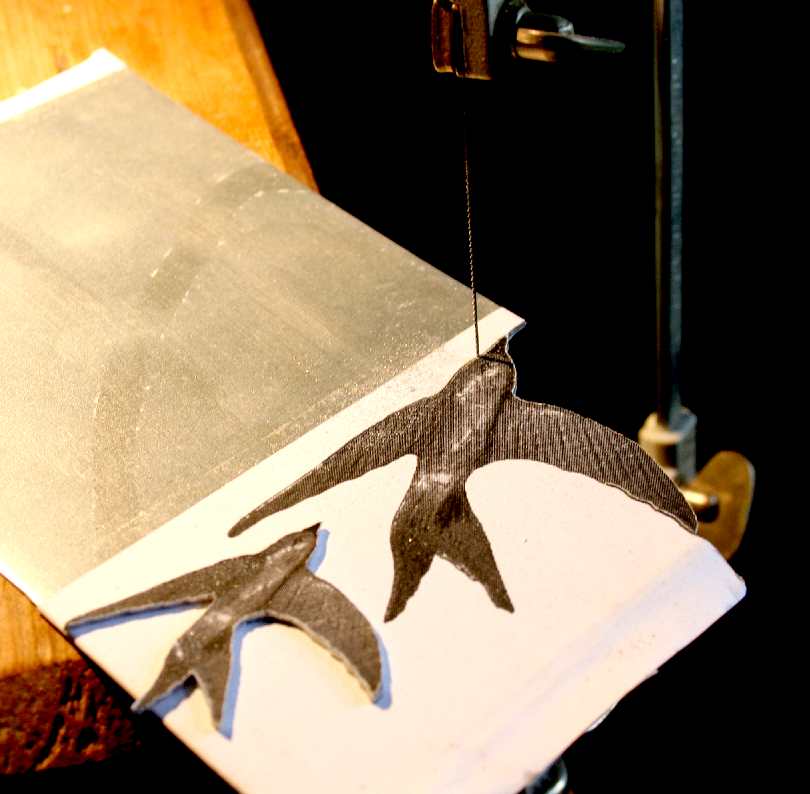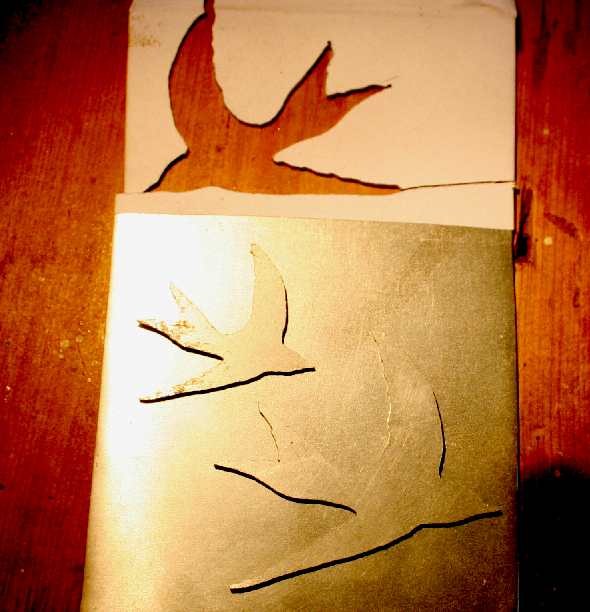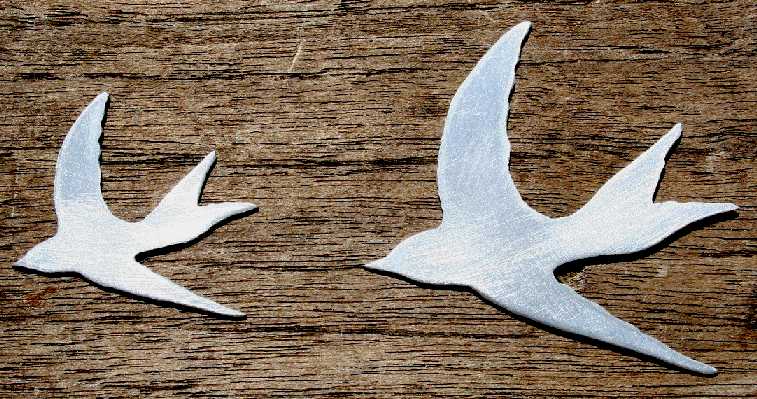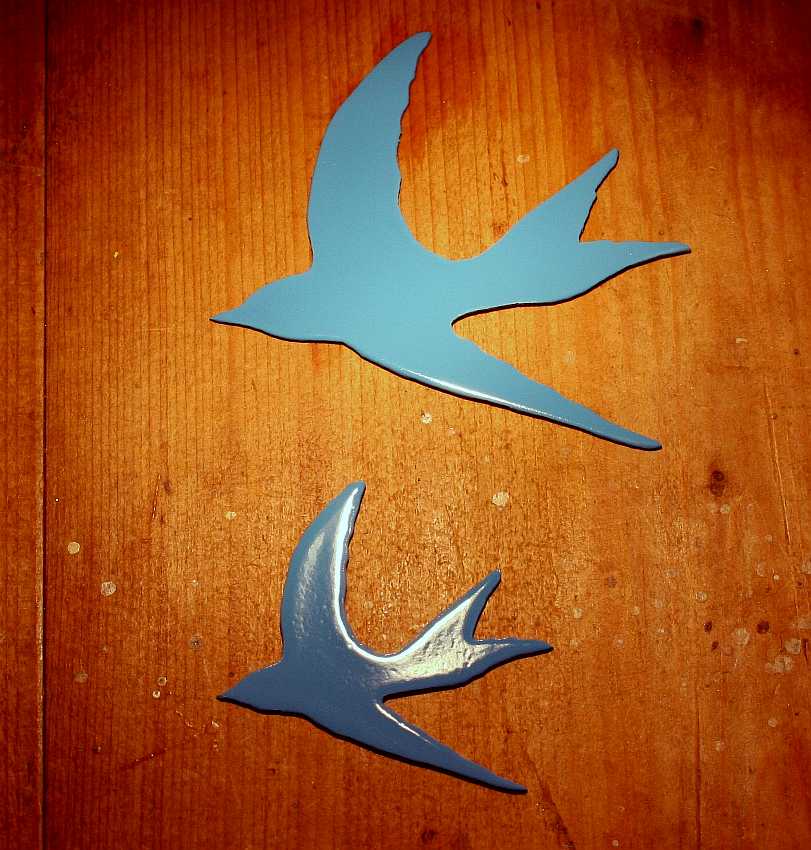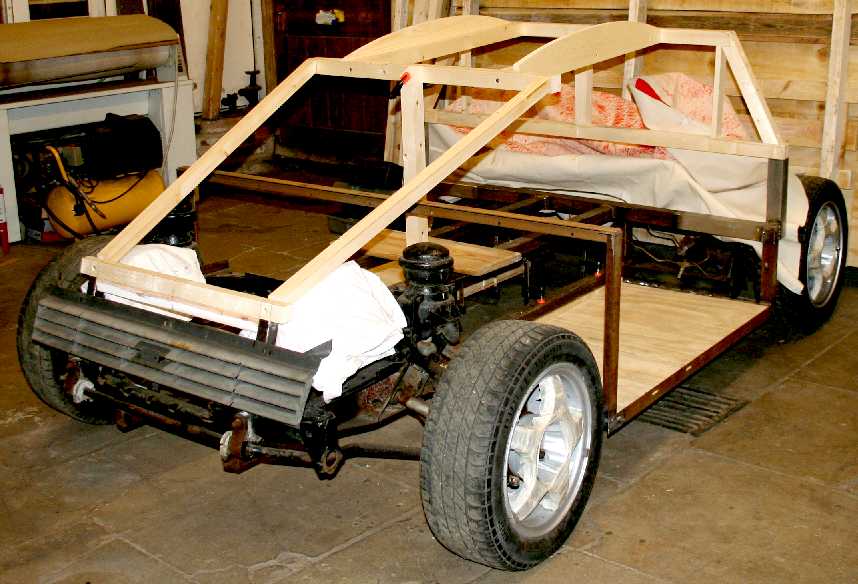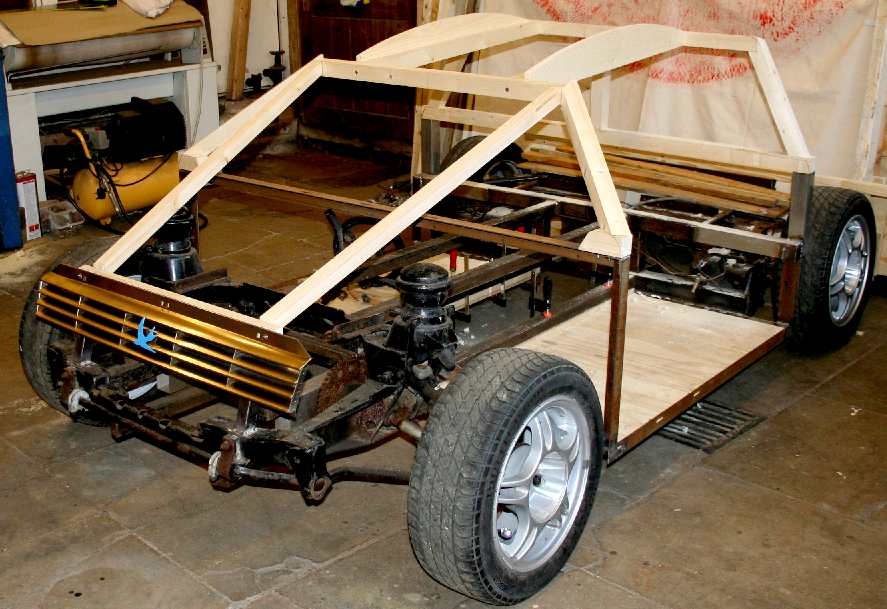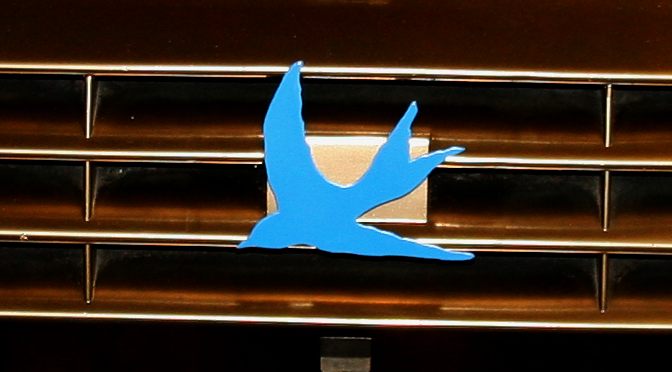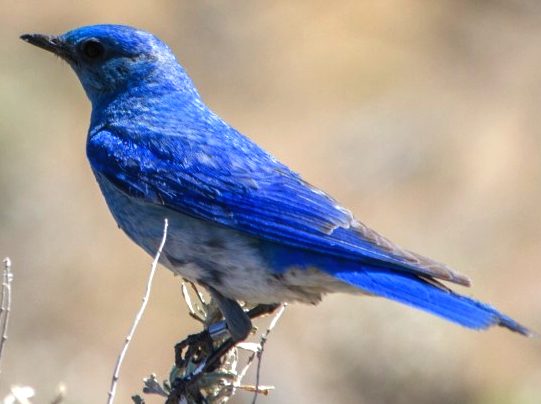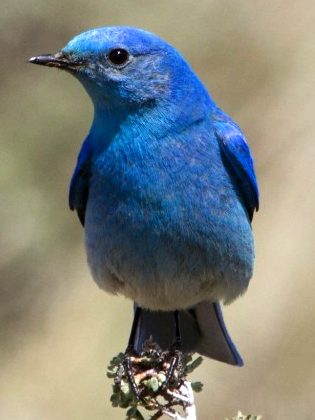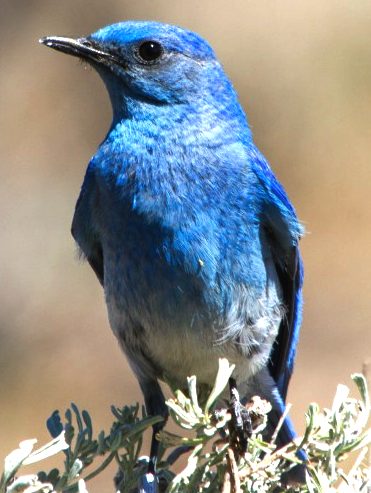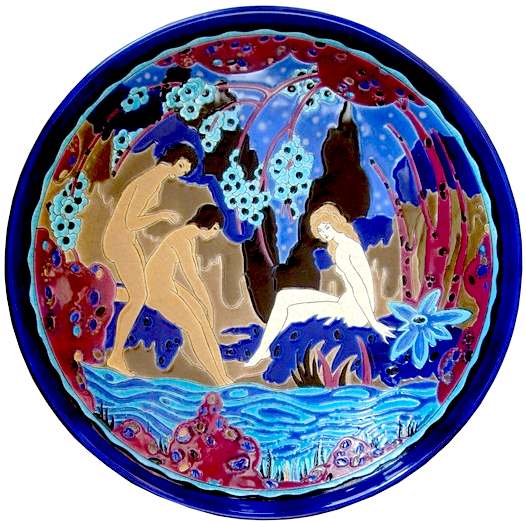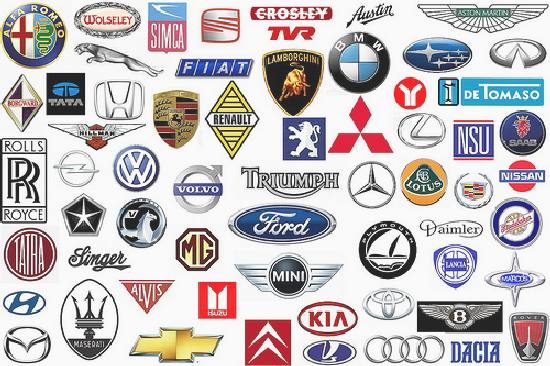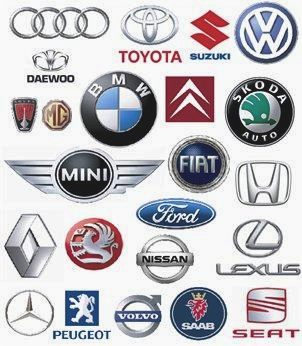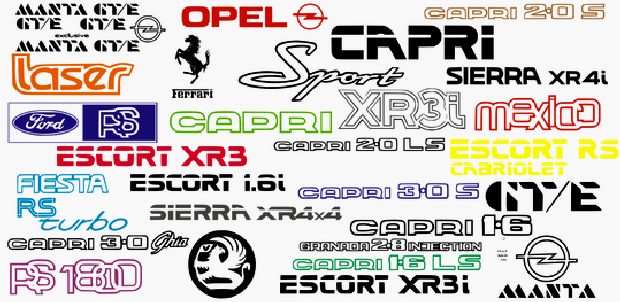|
|
|
|
Symbols are an important part of our lives. They are a way of telling the work of one man from another and in this case, vehicles from different manufacturers. This article tells how we went from a sculpture of the blue bird, to a photograph, and from there to an enameled radiator badge and steering wheel motif. The process describes a traditional method of making heraldic symbols, that anyone can enjoy using the most basic of tools.
The bird mark was registered to preserve the color blue as part of the identifying heraldic symbol - now to locate it on a vehicle bonnet resplendent in hue. We begin with a sheet of aluminium and a piercing saw as used by jewelers. A piercing saw is like a very fine coping saw. They only cost a few pounds from good hobby shops. To save time a printout of the bird is bonded to the aluminium with craft mount spray adhesive. We are making radiator and steering wheel motifs here.
Coming in from a convenient edge, the piercing saw is used to cut around the bird using a jig-sawing motion. These saw blades are extremely thin and easy to snap. So be careful. Use long smooth strokes. This is the steering wheel motif, which is the smaller of the two badges we are making today.
The second bird blank is a repeat of the first, except that it is larger, so took more time to cut. Be patient. If you rush you are more likely to make mistakes. The process requires careful concentration. So, have a hot beverage on the go, to keep up your sugar levels.
In not very long you'll have your aluminium blanks. You could just as easily use copper or brass, but we needed to save weight. We will be making more of these car badges in brass to try out different shades of blue and include other artwork prior to enameling. The use of silver and gold is also an option. Especially silver, which is easier to work into intricate shapes and solder to when making 3D shapes. Silver solder is a high temperature alloy that does not contain lead or tin. It is also very strong as a brazing material for joining other metals, such as stainless steel.
Here are the badges enameled in blue. They need to be mounted on a suitable background to emphasize their form. This is sure to need experimentation to find the right combination for the marque (brand).
Here is the car that will carry the distinctive badges above. The radiator grille is just crying out for adornment in this picture.
So we fitted a badge to see what the blue bird looks like in practice. We liked it, even without any more work on the marque's detailing. Have you ever noticed that the front of a car looks a bit like a face? Car makers employ armies of designers to give their vehicles faces that people will want to buy.
Close up of the bonnet badge fitted without any background. A background to the blue bird motif is in the pipeline.
Ultimately, the radiator badge was inspired by our feathered friend below. Sir Malcolm Campbell became a fan of the blue bird, in turn inspired by Maurice Maeterlinck's play 'Chasing Happiness,' later known as the "Blue Bird of Happiness." Below are a few pictures of the happy chappie.
The North American Blue Bird is a fine example of nature adapting life to suit its environment. The cousins of this fabulous creature have inspired branding across the globe, from toffee to software - including the vehicle motifs on this page.
ENAMEL
Vitreous enamel, also porcelain enamel in US English, is a material made by fusing powdered glass to a substrate by firing, usually between 750 and 850 °C (1,380 and 1,560 °F). The powder melts, flows, and then hardens to a smooth, durable vitreous coating on metal, or on glass or ceramics. The term "enamel" is most often restricted to work on metal, which is the subject of this article. Enameled glass is also called "painted". Fired enamelware is an integrated layered composite of glass and metal. The word enamel comes from the Old High German word smelzan (to smelt) via the Old French
esmail. Used as a noun, "an enamel" is a usually small decorative object, coated with enamel coating. Enameling is an old and widely adopted technology, for most of its history mainly used in jewelry and decorative art. Since the 19th century the term applies also to industrial materials and many metal consumer objects, such as some cooking vessels, dishwashers, laundry machines, sinks, and tubs.
("Enamelled" and "enamelling" are the preferred spellings in British English, while "enameled" and "enameling" are preferred in American English.)
VEHICLE MARQUES
Marque or 'make' are often used to denote a brand of motor vehicle, which may be distinguished from a car model such as a Ford Fiesta, where the marque is 'Ford' and the model is 'Fiesta.' The pictures above give you some idea of the number of brands there are and how important the design of a badge is in identifying one maker from another.
Brand is the "name, term, design, symbol, or any other feature that identifies one seller's product distinct from those of other sellers." Brands are used in business, marketing, and advertising. Initially, livestock branding was adopted to differentiate one person's cattle from another's by means of a distinctive symbol burned into the animal's skin with a hot branding iron. A modern example of a brand is Coca-Cola which belongs to the Coca-Cola Company.
In accounting, a brand defined as an intangible asset is often the most valuable asset on a corporation's balance sheet. Brand owners manage their brands carefully to create shareholder value, and brand valuation is an important management technique that ascribes a money value to a brand, and allows marketing investment to be managed (e.g.: prioritized across a portfolio of brands) to maximize shareholder value. Although only acquired brands appear on a company's balance sheet, the notion of putting a value on a brand forces marketing leaders to be focused on long term stewardship of the brand and managing for value.
The word "brand" is often used as a metonym referring to the company that is strongly identified with a brand. A concept brand is a brand that is associated with an abstract concept, like breast cancer awareness or environmentalism, rather than a specific product, service, or business. A commodity brand is a brand associated with a commodity. Got milk? is an example of a commodity brand.
HERALDRY
Heraldry is the profession, study, or art of creating, granting, and blazoning arms and ruling on questions of rank or protocol, as exercised by an officer of arms. Heraldry comes from Anglo-Norman herald, from the Germanic compound harja-waldaz, "army commander". The word, in its most general sense, encompasses all matters relating to the duties and responsibilities of officers of arms. To most, though, heraldry is the practice of designing, displaying, describing, and recording coats of arms and heraldic badges.
LINKS
http://en.wikipedia.org/wiki/List_of_automobile_marques http://en.wikipedia.org/wiki/Brand http://www.youtube.com/watch?v=cn9RGvBp1sw http://en.wikipedia.org/wiki/Vitreous_enamel
|
|
|
This website is Copyright © 2014 Bluebird Marine Systems Limited. The names Bluebird™, Bluefish™, Ecostar DC50™, and
|
